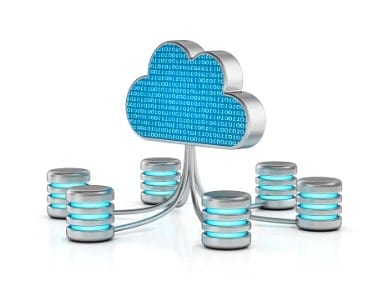Composable Customer Master Data Management (CMDM)
You might have more recently heard of “composable” solutions, this composability refers to the flexibility and modularity of systems, allowing organizations to adapt, customize, and integrate them into their existing technology landscape efficiently.
The concept of composable solutions has been largely in the shadows for the past decade, with its roots tracing back to the evolution of modular and service-oriented architectures in software development. However, it is gaining more prominence in the context of enterprise systems descriptions.
In the 2010’s there was a notable shift towards more flexible and agile approaches to software design and integration within enterprises. This shift was driven by factors such as the increasing complexity of business requirements, the rise of cloud computing, the growing demand for scalability and interoperability, and the emergence of microservices architecture. It’s fair to say that the term started gaining traction notably around the mid-2010s and has since become a key aspect of discussions surrounding modern enterprise software architecture and integration strategies.
For master data management and customer master data management in particular, a composable approach involves breaking down data management processes into modular components that can be easily assembled or reconfigured to meet specific data governance and data quality requirements.

Composable CMDM solutions allow organizations to adapt to evolving data landscapes and support various varied demands of organizations about customer master data management, including ensuring data accuracy, consistency, and compliance. Additionally, these solutions enable organizations to scale more effectively and integrate seamlessly with existing technology ecosystems.
Overall, composable solutions represent a significant paradigm shift in enterprise systems architecture, offering organizations the flexibility and agility needed to navigate the complexities of modern business environments.
Pretectum CMDM aligns with the concept of the composable solution by offering a flexible, scalable, and interoperable platform that supports the modular and service-oriented architecture businesses are increasingly adopting.
The platform’s design allows for seamless integration with various software applications, facilitating smooth data flow across different departments and systems.
This integration capability is crucial for promoting collaboration, enhancing productivity, and enabling a more agile response to customer demands. Furthermore, Pretectum CMDM’s ability to scale both vertically and horizontally accommodates the growing volume and complexity of data, ensuring that businesses can rely on it as a foundational data management solution that evolves with their needs.
By automating data integration, cleansing, and standardization processes, Pretectum CMDM reduces manual effort and human error, supporting the principles of composable solutions where efficiency and adaptability are key.

Pretectum CMDM vs monolithic solutions
Older monolithic Customer Master Data Management (CMDM) architectures have all components of the CMDM tightly integrated into a single, cohesive application. In this architecture, all functionalities, such as data storage, data processing, data governance, and user interfaces, are bundled together within a single application or platform.
Traditional stacks with their tightly integrated components are difficult to separate or modify. Changes often require extensive reconfiguration or redevelopment of the entire system. Such platforms struggle with adapting to change due to their tightly coupled nature. Upgrades or changes often involve significant downtime and risk of system instability.
Integrating these traditional stacks with newer technologies or external systems can be challenging and may require custom development efforts. Interoperability issues are common, leading to data silos and inefficiencies. Scaling the traditional stacks often involves scaling the entire system, which can be costly and inefficient.
Vertical scaling may lead to performance bottlenecks, while horizontal scaling can be complex and disruptive. Automation capabilities in traditional stacks may also be limited, leading to manual intervention in repetitive tasks and increased risk of errors.
The Pretectum CMDM, with its composable architecture, offers benefits in terms of flexibility and modularity, adaptability to change, integration and interoperability, scalability, automation, and efficiency to all shapes and sizes of organizations.
Pretectum CMDM employs a modular architecture, which allows organizations to break down data management processes into smaller, reusable components. This modularity enables greater flexibility in configuring the CMDM solution to meet specific business requirements. An organization can choose which parts of the platform they want to use, based on their needs. Part of this is also covered by the deployment approaches for CMDM. Adding or removing components as necessary gives the organization many options and a great deal of flexibility. This flexibility ensures that the CMDM solution can evolve alongside the changing business landscape and evolving data governance requirements.

With the composable architecture, Pretectum CMDM supports high adaptability to changes in business requirements, technology advancements, and regulatory frameworks. Organizations can easily take advantage of new functionality as it becomes available or switch approaches to individual components or discrete functionality with minimal disruption. This adaptability enables organizations to respond quickly to emerging trends, regulatory updates, or shifts in customer demands, ensuring that the CMDM solution remains relevant and effective over time.
Seamless integration with existing systems and technologies is essential with all modern systems, the promotion of interoperability across the organization’s data landscape is emphasized by support for meshed customer data management. The modularity of the platform allows for easy integration with department or division or business unit-specific software applications, databases, and third-party services.
By facilitating data flow across different departments and systems, Pretectum CMDM promotes collaboration, enhances productivity, and ensures consistent data across the organization.
Pretectum CMDM’s composable architecture enables both vertical and horizontal scalability, allowing organizations to scale their CMDM solution to accommodate growing data volumes, user loads, or business expansion. Vertical scaling involves adding resources such as CPU, memory, or storage with minimal impact – this is achieved as a result of the SaaS architecture of the platform. Horizontal scaling involves adding more instances of components to distribute the workload, this is not a problem for the platform because it is built multi-tenant from the bottom up and makes use of on-demand compute resources. This scalability ensures that the platform services the needs of your organization and many others, as required.
Automation is a key feature of Pretectum CMDM, streamlining integration, loading, standardization, quality assessment and deduplication, and other data management processes. By automating repetitive tasks, the Pretectum CMDM reduces manual effort and human error, improving your teams’ overall efficiency. Automated workflows and business rules also help drive improved data quality, consistency, and compliance, supporting the principles of composable solutions where efficiency and adaptability are paramount.



















